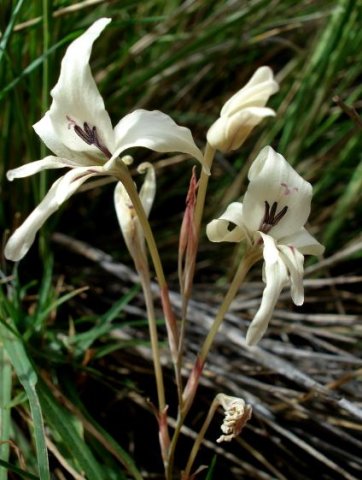Gladiolus leptosiphon

Gladiolus leptosiphon is a slender, cormous perennial reaching heights from 30 cm to 70 cm. The corm becomes about 1,8 cm in diameter, its tunic consisting of coarse fibres developing into vertical claw-like ribs at the base.
There are about six leaves, as well as small, membranous cataphylls present at ground level. About four leaves start at the base, the longest ones; the others are shorter up the stem. The leaves are narrow and linear, thickened around their midribs but not along the margins. Leaf-tip height is about the top of the flower spike.
The species distribution is in the east of the Western Cape to the west of the Eastern Cape, slightly inland to the north of the southernmost mountain range, the plants mainly growing in the Swartberg and Baviaanskloof Mountains.
The habitat is renosterveld and dry, stony fynbos slopes in clay and shale soils. The species is considered vulnerable in habitat early in the twenty first century, on account of expanding ostrich and crop farming (Vlok and Schutte-Vlok, 2015; Goldblatt and Manning, 1998; iNaturalist; http://redlist.sanbi.org).

